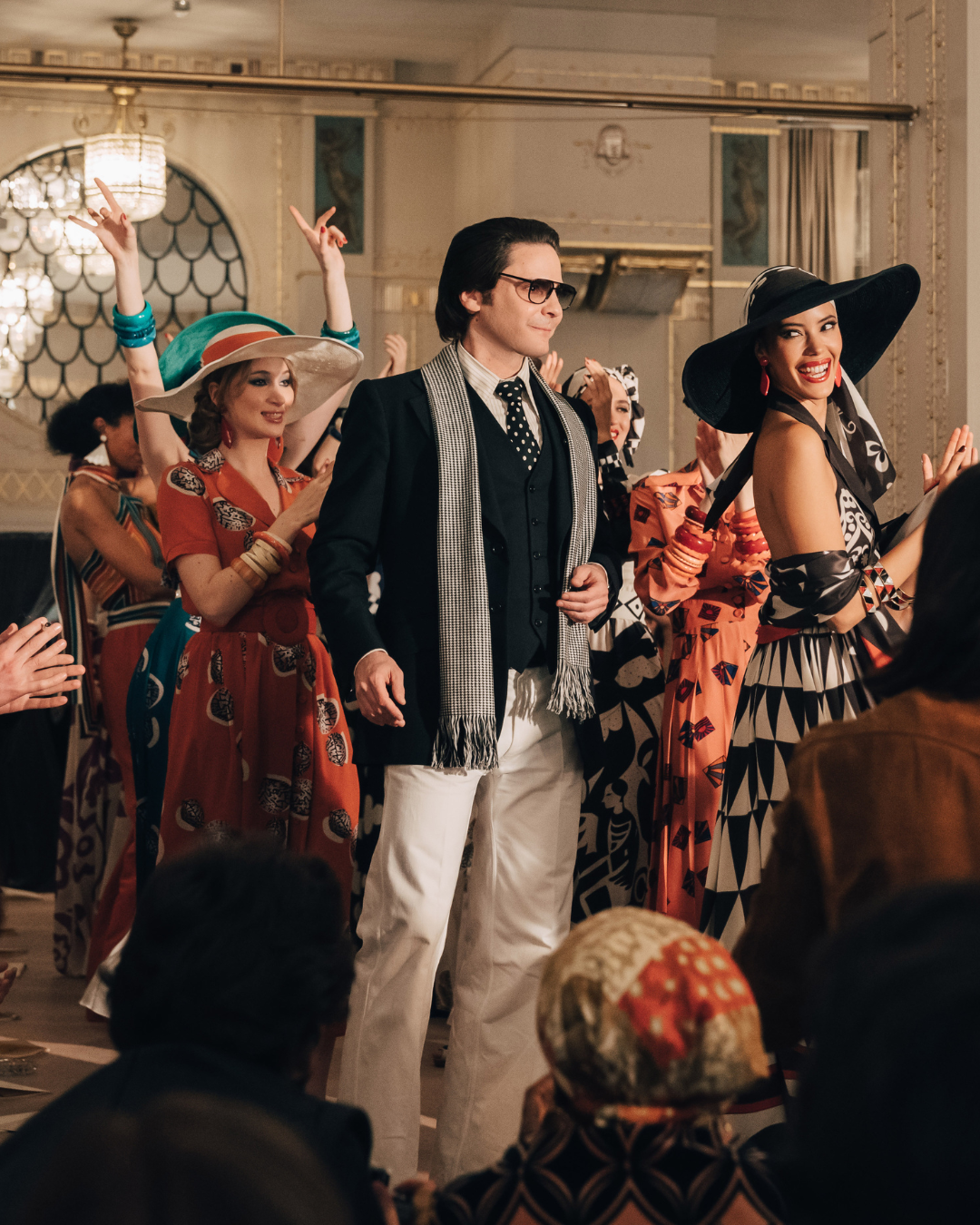
Becoming Karl Lagerfeld, what to expect? «The challenge was to show the Karl Lagerfeld that no one knows»
The release of Becoming Karl Lagerfeld coincides with a renewed interest in the life and work of Lagerfeld, as evidenced by the recent exhibition "Karl Lagerfeld: A Line of Beauty" at the Metropolitan Museum of Art and the upcoming biographical film with Jared Leto. Scheduled to air on Disney+ starting June 7, 2024, this biographical series explores the professional and personal beginnings of the designer before he became a global icon. Set in the 1970s, Becoming Karl Lagerfeld traces the early steps of the couturier at Chloé and Fendi, his tumultuous relationship with dandy Jacques de Bascher, and his friendly rivalry with Yves Saint Laurent. We tell you more about the mini-series directed by Audrey Estrougo and Jérôme Salle, adapted from the biography Kaiser Karl by Raphaëlle Bacqué.
Karl Lagerfeld is a central figure in 20th and 21st-century fashion. He impacted the industry not only with his creations but also with his flamboyant personality and numerous collaborations. He transformed Chanel into a modern and influential brand while imposing his own style, immediately recognizable by his black glasses, leather gloves, and white ponytail. His influence extends far beyond the catwalks, reaching into popular culture, where he became a symbol of elegance, eccentricity, and artistic vision. Five years after his passing, his life and work continue to inspire new generations of designers and fashion enthusiasts. This is why the main goal of the series is to reveal aspects of the designer that the general public does not know, to humanize him in a way. By showing his journey as a young emerging designer, with his doubts and experiments, offering a detailed and nuanced view of the man behind the icon. The filming took place over five months, with scenes shot in France, Monaco, and Italy. This diversity of locations allows for an accurate recreation of the different stages of his life and the varied atmospheres of that decade. In total, 2200 extras, 3000 costumes created or rented, and 47 sets were used to capture the essence of this era and Lagerfeld's rise in the fashion world.
The costumes play a central role, reflecting not only the personal and professional evolution of the young Lagerfeld but also the vibrancy of fashion during those years. The responsibility for this monumental task was given to Pascaline Chavanne, a César-winning Belgian costume designer known for her work with directors such as François Ozon and Leos Carax. Her work, which she discussed with Numéro Magazine, was a unique challenge as the action focuses on a period when the artist was still finding his iconic style. Unlike the well-known image of the creator, in black and white with his gloves and ponytail, the Karl of this era wore colorful shirts and experimented with various styles. To ensure the authenticity and precision of the costumes, the designer set up a specific manufacturing workshop. Each garment was designed to fit perfectly on actor Daniel Brühl, thus embodying the distinct style of his character. The costume creation process also involved exhaustive research and meticulous documentation because, behind all this, «the idea was not to reproduce the outfits identically, but rather to draw inspiration from all that to translate a state of mind». Collaboration with historical fashion houses like Chloé was particularly crucial for the authenticity of the costumes.
Through the six episodes, viewers will witness the journey of the young Lagerfeld, then aged 38. The directors delved into the vibrant nightlife of Paris in the seventies, a time marked by freedom, creativity, and cultural vibrancy, leaving no detail untouched, from trendy clubs to smoky bars. By exploring the complex relationships and rivalries that marked his career, the series also offers a glimpse behind the scenes of the fashion industry at that time, with its ego conflicts, grand parties, and destructive passions, illustrated by significant encounters with fashion figures such as Yves Saint Laurent and Jacques de Bascher, as well as his interactions with Pierre Bergé and even Paloma Picasso.














































